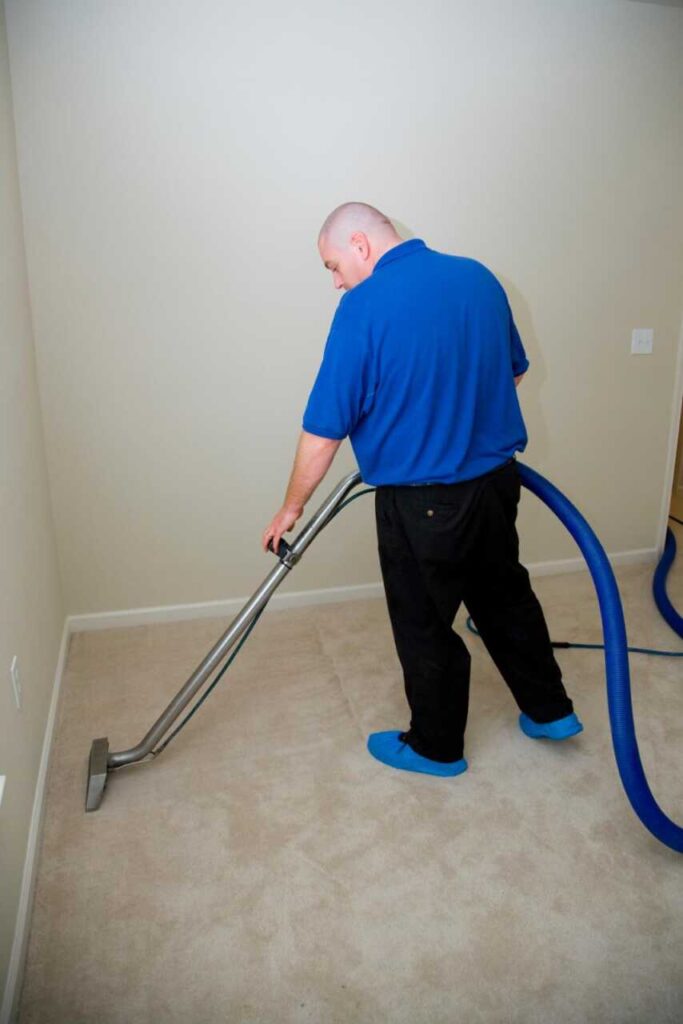
Contents
When water damage strikes your home, quick action is essential. You need to assess the severity of the situation first, pinpointing the source and type of water involved. From there, you’ll have a range of effective techniques at your disposal to minimize damage. Whether it’s using a wet/dry vacuum or employing air movers, knowing the best methods can make all the difference. Let’s explore these emergency water extraction techniques to guarantee your home recovers swiftly and effectively.
Key Takeaways
- Identify the water source and type to assess damage severity before extraction starts.
- Use a wet/dry vacuum for effective water removal in smaller areas, ensuring frequent tank emptying.
- Employ submersible pumps in low-lying areas for efficient water extraction from flooded spaces.
- Utilize air movers and dehumidifiers together to accelerate drying and prevent mold growth.
- Consider professional water extraction services for extensive damage and comprehensive cleanup.
Assessing the Severity of Water Damage
When you face water damage in your home, evaluating its severity is essential for effective remediation. Start by identifying the source of the water—whether it’s from a broken pipe, flooding, or a leaking roof.
Next, categorize the water type: clean, gray, or black. Clean water is relatively harmless, while gray water may contain contaminants, and black water poses serious health risks.
Inspect affected areas thoroughly. Check for visible signs like discoloration, warping, or mold growth. Don’t forget to assess hidden spaces, such as behind walls and under flooring, as damage can spread quickly.
Use moisture meters to measure humidity levels in the air and materials.
Based on your findings, determine the urgency of the situation. Severe damage may require immediate professional intervention to prevent further structural problems and health hazards.
Your prompt action can minimize long-term repercussions and restore your home’s safety.
Using a Wet/Dry Vacuum
A wet/dry vacuum is an essential tool for effectively removing standing water from your home after a flood or leak. These versatile machines can handle both liquid and solid debris, making them ideal for post-water damage cleanup.
First, verify you’ve unplugged any electrical appliances in the affected area to avoid hazards. Next, choose the correct attachment for your vacuum—usually a wide nozzle to maximize water removal.
Start vacuuming the water, moving the nozzle slowly to allow the machine to capture as much liquid as possible. Empty the vacuum’s tank frequently to maintain suction power.
After extracting the bulk of the water, you can use the vacuum to pick up residual moisture on surfaces.
Don’t forget to thoroughly clean your vacuum after use to prevent mold growth. With the right techniques, using a wet/dry vacuum can greatly reduce water damage and help restore your home efficiently.
Employing Submersible Pumps
Using a wet/dry vacuum is effective for initial water extraction, but in cases of significant flooding, employing submersible pumps can be a more efficient solution.
These pumps are designed to operate underwater, making them ideal for removing large volumes of water quickly.
Here’s what you need to know:
- Choose the Right Pump: Select a submersible pump with adequate horsepower and flow rate for your situation.
- Set Up Safely: Confirm the electrical connections are waterproof and avoid using the pump in standing water unless it’s specifically rated for that.
- Positioning: Place the pump in the lowest area of your home to maximize water removal efficiency.
- Monitor Performance: Regularly check the pump’s operation to confirm it’s effectively removing water without overheating.
Utilizing Air Movers and Dehumidifiers
To effectively dry out a home after water extraction, air movers and dehumidifiers play an important role in reducing moisture levels.
Air movers, or high-velocity fans, circulate air throughout the affected areas, increasing evaporation rates. By strategically positioning these units, you can direct airflow to damp surfaces, ensuring thorough drying.
Dehumidifiers complement this process by removing excess moisture from the air. They pull in humid air, condense it into water, and release drier air back into the space.
It’s vital to select the right capacity for your home’s size; a unit that’s too small won’t keep up with the moisture levels, while one that’s too large can lead to over-drying.
For best results, run both air movers and dehumidifiers simultaneously. This combination accelerates drying, helps prevent mold growth, and returns your home to a safe and comfortable environment faster.
Calling in Professional Water Extraction Services
When faced with significant water damage, calling in professional water extraction services can be essential for effective remediation.
These experts bring specialized equipment and knowledge, ensuring your home returns to its pre-damage condition quickly and safely.
Here’s why you should consider hiring professionals:
- Expert Assessment: They’ll evaluate the extent of the damage, identifying hidden moisture sources that you might overlook.
- Advanced Equipment: Professionals utilize industrial-grade pumps and dehumidifiers, which work more efficiently than standard tools.
- Rapid Response: Their immediate action reduces the risk of mold growth and further structural damage, safeguarding your home.
- Comprehensive Cleanup: They handle the entire process, from extraction to drying, which saves you time and stress.
Summary
When water damage strikes, every moment counts. By swiftly evaluating the severity and employing the right extraction techniques, you can greatly reduce the risk of mold and structural damage. Don’t underestimate the power of a wet/dry vacuum or the efficiency of submersible pumps. But what if the situation escalates? If you’re feeling overwhelmed, calling in professional services might be your best bet. Remember, the longer you wait, the more costly the consequences could become. Act fast!
Recent Posts
Mold Remediation Tips After Flooding Disaster
Rapid mold development after a flood poses significant health risks and can lead to extensive
10 Steps for Professional Flood Damage Repair
Imagine you’ve just returned home to find your basement flooded after a heavy storm. The
Top Flood Damage Repair Extraction Techniques
When floodwaters rise, the clock starts ticking, much like a ticking time bomb for your
